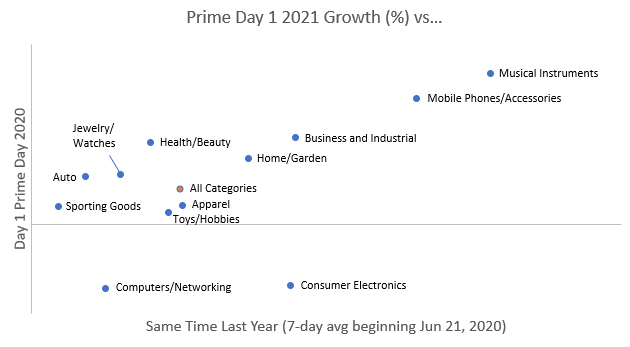
- Posted on
- • January 6, 2021

Are inch-thick wholesale catalogs wasteful, tree-killing doorstops or irreplaceable business tools? The answer may vary depending on who you ask, which is why many B2B wholesalers are wary of moving their catalog-based business online.
Businesses that manage complex products and high SKU counts are often skeptical that an ecommerce store can handle their B2B sales. Some may even hesitate to make the move to online selling, fearing that their customers may not be ready to make the transition to online purchasing. While these concerns are certainly valid, wholesalers that resist digitization may find themselves crowded out of their market by competitors who embrace B2B ecommerce much sooner.
In this article, we take a look at how digital catalogs in ecommerce can help boost your wholesale business and why now is the right time to go digital.

Paper Catalogs Are Good for Some Things, Bad for Others
For buyers, catalogs have their upsides and downsides. On the one hand, a paper catalog is a ready reference book that customers can familiarize themselves with. Often seen with bent pages, sticky notes, and circled products, catalogs provide a thorough overview of products.
But catalogs have their limitations. With limited space and printing resources, paper catalogs are sometimes unable to feature a complete product inventory. Navigating through tiny print with often inadequate indexes makes searching for unfamiliar items tedious. Space constraints often limit vital product information, which may cause customers to turn to a manufacturer’s catalog or go online. This can lead to a buyer finding a competitor’s website with interactive catalogs, easy inventory checks, and speedy purchase options.
Once they experience the convenience of online shopping, your customers may be less inclined to go back to calling or faxing in their catalog orders. If your business is still primarily offline, this could cause you to lose out to the rest of your competitors.
What is an Online Catalog?
An online catalog, also known as a digital catalog or B2B ecommerce catalog, is an extensive electronic catalog on a website that showcases all the products you sell and allows buyers to shop and purchase. A decade ago, bringing a catalog online might have meant posting chapters of the print catalog as PDFs. Today, B2B sellers can cater to customers with fully searchable databases of their items and new tools that dramatically improve their shopping experience.
Difference Between Online Catalogs and Paper Catalogs
Time-consuming, expensive, and complicated, physical catalogs are often outdated before the ink is dry. It’s impossible to update pricing and to add (or remove) products from an existing catalog. But, most of all, not offering a full online experience for your shoppers limits opportunities for customer education, marketing, and service.
Unlike paper catalogs, digital catalogs allow you to showcase your entire product library and make it accessible with robust search technology, shopping features, and online content. With a full online catalog, B2B online sellers can spend less time keying in orders manually and more time building relationships with their customers.
How Online Catalogs Increase Your Sales
Because they are digital, online catalogs give sellers the ability to provide real-time information, automate the buying experience, and turn their entire selection of products into an effective sales and marketing tool. Online catalogs drive sales because they are accessible, convenient, and engaging.
Accessible Buying
According to Gartner, 77 percent of B2B buyers state that their latest purchase was complex or difficult. This shows how critical it is for sellers to make the research and buying experience of their products more convenient, seamless, and clear for buyers. With online catalogs, you have the opportunity to provide a spectacular product experience and remove any hesitation that buyers may have about your products.
Streamlined Shopping Experience
While elegant to look at, paper catalogs don’t have built-in buying features. Online catalogs remove friction by allowing users to research products and add any items to the cart with ease—across any device and channel—without waiting for assistance.
Engaging Content
Buyers value content, which is why many users still enjoy the experience of paper catalogs. Digital catalogs increase your customer engagement by placing your products front and center and allowing you to add elements like videos, animations, and interactive features that help modern buyers make buying decisions.
How to Make an Online Catalog
The shift from an offline to online catalog may look different for each business depending on your industry and the needs of your buyers. However, there are common elements that every seller must keep in mind before adopting an online catalog. You’ll want to make sure your website and your customer communication processes are up and successful before shifting to a digital experience.
The following are additional elements to consider for your online catalog:
- Sync Products: Use identical product names, SKUs, and model numbers in your catalog and your website. This will make it easier for customers who use the print catalog to find things online.
- Curate Categories: You may want to retain a connection to your catalog for return buyers, but when you go online, you’ll be able to create new categories to cater to specific groups like buyers, experts, and seasonal shoppers.
- Power Up Search: If you have a vast number of products and variations, consider using faceted search to make it easier to find the correct parts.
- Promote Your Website: Use your print catalog to send shoppers to your digital catalog and website for additional product information, faster search for parts, easier ordering, and special promotions. Consider offering a discount when shoppers go to the electronic catalog for the first time.
- Set Up Quick Order Options: Quick order options can be offered for common product bundles or frequently purchased items to speed things along for your shoppers.
- Assure B2B Buyers They’re Still VIPs: Contact your top customers to let them know that the electronic catalog is there to make their life easier and that your staff is still available if they have questions or need special service. This will allow you to continue serving these high-volume customers.
- Make Sure It’s Mobile: There are many buyers who work way from an office and don’t have regular access to a desktop computer. Make sure your electronic catalog caters to them with a site that is fully optimized for mobile devices.
After transitioning to a digital catalog, you can still incorporate a paper catalog as a secondary driver for your business. Consider scaling back the paper catalog with a smaller print run, offering your paper catalog by demand only, or establishing a less frequent publication schedule. You can even use your physical catalog as a demand engine by giving buyers a preview of your most enticing products and offers and then driving them to your website for a more fully-featured shopping experience.
Benefits of Digital Catalogs for Sellers
As useful as an online catalog can be for buyers, it can prove even more valuable for wholesale business owners. Extensive automation not only saves your team from the time-consuming task of manual order management, it also increases the accuracy and the speed of the order. Online ordering also opens up a world of possibilities for nimble marketing and selling:
New Products
You no longer have to wait until the next print catalog date to share the news. With a website, you are able to quickly launch and promote new products.
Volume Discounts
You can incentivize customers to purchase more with large order discounts. A website makes it easier for buyers to apply those discounts and see their pricing in cart.
Online Specials and Bundling
Online-only specials let you encourage sales of inventory you need to clear out and encourage customers to explore different products.
Free Shipping
An online catalog gives you the opportunity to offer free shipping for online orders, helping you to stay competitive with other online sellers while giving customers an incentive.
Standing Orders
For buyers who order the same items from you on a regular basis, a website allows buyers to create and manage automatic recurring orders that can save them time and ensure that they are consistently stocked. This helps you to increase customer lifetime value without any manual intervention.
Instead of constraining you to previously published inventory and pricing, a digital catalog keeps you in complete control of your product assortment, pricing, and shopping experience at all times. With an online catalog, you can keep your prices up to date, your customers satisfied, and your operation running smoothly. If you haven’t gone digital yet, now is the time.
Take Your Digital Catalog to the Next Level
Digitalization allows you to empower your sales rep, attract and convert a wider customer base, and keep your business agile and competitive. Online catalogs and B2B commerce go hand in hand. To create an spectacular online catalog, you need to invest in a great website experience.







